News and Reflections
Success for TEC in Queensland at the 2018 Conference & Awards
I am proud of both my TEC and KEY groups, which received awards at the 2018 TEC Chair Conference and Awards earlier in the year.
I am delighted to be part of the success story of TEC in Queensland and am pleased to share that I received a Gold Award for my group, TEC 35, and New Group Start Award for my group, KEY 125, at the recent TEC Australia Chair Conference and Awards.
It was a wonderful night that showed the Brisbane TEC groups are thriving with many awards for Queensland Chairs.
I am particularly proud of my KEY group that has come together from our inaugural goal setting meeting in February to be 17 strong by July. As all the members will tell you, the support challenge and fun of the group is fantastic. It always helps to have two or three truly game changing businesses in the group and we sure do have some great ones.
I would like to acknowledge our hosts so far; Dean Graham of EPIC Assist, Leanne Pearson of Rinstrum, Tobias Sonnenburg of Tritium, Gavin Dickinson of Computer One, Gerhard Fourie of your Solutions Compounding Pharmacy and Nick Siddle of Galvin Engineering. Thank you for welcoming your group members into your space and for your hospitality!
One of the amazing things about TEC is the opportunity to listen to some fabulous speakers. This year my groups have been lucky enough to experience sessions with; Debbie Richardson, Duncan Fish, Greg Donlan, Peter Berry, Dr Cathryn Lloyd, Sue Holz, Tracey Hooper and Maree Nolan, Nick Setchell and Matt Tice. Thank you all for taking the time to share your insight and wisdom with us – we’re a lucky bunch.
If you would like to learn more about TEC, please click here and send me a message.

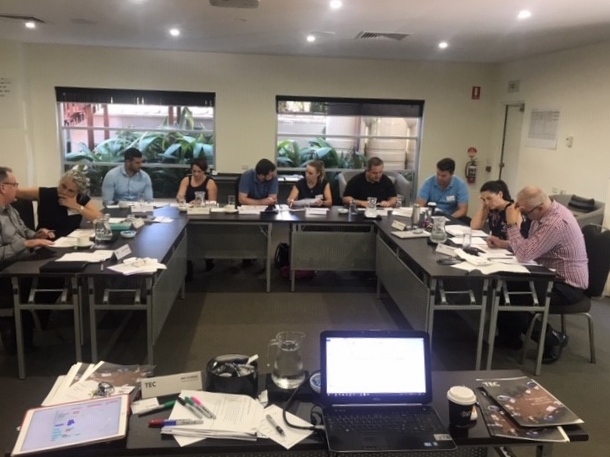
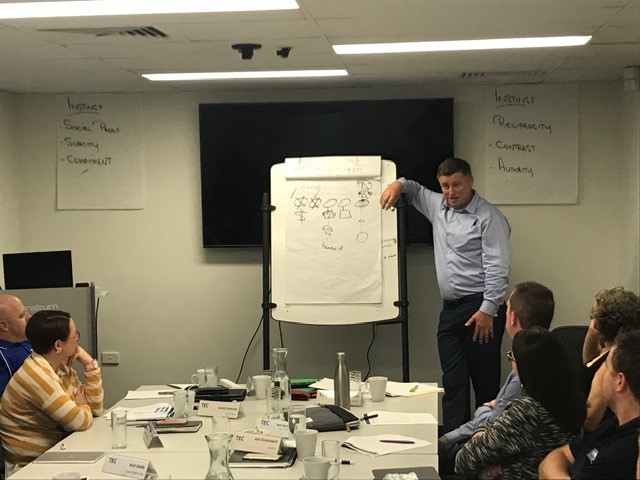
The Five Contradictions in Budgeting
I don't think there's any process in organisations that wastes such a large amount of effort and time for little use as the budgeting process. Here is what is being done and what should be done by organisations to actually generate results…
Here, in Australia, many businesses are reviewing progress after their first month of the new financial year. Most business leaders are finding the unpleasant truth that the budget, so exhaustingly put together just weeks before, isn’t helping very much.
At the same time many people are questioning whether the rise of the mega ERP systems have helped any part of the organisation apart from the finance function. And everyone is familiar with cascading spreadsheets which allow a myriad of numbers to be produced. All of these are guesses; and usually wrong.
Are we letting ourselves down with the way we budget?
I don't think there's any process in organisations that wastes such a large amount of effort and time for little use as the budgeting process. Almost every business of any size has a budgeting process, but most don't really know why they do it. It's a bit like the monkey on the rope story. “It's always been done that way so we’d better carry on otherwise something terrible will happen.”
It's all about Clarity of Purpose
There are at least three separate purposes that businesses could have for a budget. These include controlling costs, delivering on a plan and raising performance. By thinking they can do all three, they're more likely to do none of these particularly well.
This is not to say the processes and tools don't have value. They do. But businesses aren't using them correctly. Jack and Suzi Welch recently discussed this in the context of Sales incentives leading to overly conservative targets with no real ownership or trust.
Who really owns your budget?
Even the seemingly simple question of who owns the budget doesn't have a clear answer. I know plenty of CEO's who don't feel ownership, despite the fact that they are accountable for the delivery of the financial performance of the organisation. In large corporates most divisional heads would point to the CFO and the finance function. Certainly the timetable of setting a budget may be, but more often than not its for the benefit of the finance function, not the business. These timetables have no bearing on the decision making requirements of the business.
But how about the other stakeholders who influence and are affected by a business's financial performance? What do they need?
For medium-sized businesses, a bank may be a key stakeholder, as this provides some comfort especially in the Australian tick-boxing banking culture. Businesses that are subsidiaries of larger companies focus on profit and loss statements to keep the central financial team happy. It's "comfort", not decisions, these guys are after.
When we look at deploying the plan into the rest of the business, often the primary tool is the budget. How much effort goes into not only item by item budgeting but also tracking these items each month? A fellow TEC Chair, Barry Upfold, is always reminding members that the one budget line all companies are good at meeting is the expenses line, notwithstanding what the revenue line is doing.
Beware the Five Contradictions!
1. Precision over timeliness
How often have we had to wait for the results because the numbers aren't in? The precision required should be defined by the owner, not by the accountant. In 2016 there is no excuse not to know within hours of the end of a period how the business is tracking. The purpose is to inform and to frame the conversation, which then leads to decisions.
2. Reconciliation over performance
Double-Entry book-keeping was never designed to help run a business. It is brilliant as a control of mis-allocation and fraud and is embedded in the training of professional accountants. But it doesn't inform performance. It doesn't inform progress. Broad brush variance reports can ignore small item reconciliation without losing sense. The purpose is to inform and to frame the conversation, which then leads to decisions.
3. Review over foresight
Many people use a budget as a control. But a control against what? A frantic ”Finger in the air” guessing game conducted in the six weeks prior to the new Financial Year? It's a actually a poor tool for controlling actions and spending. This is mainly because it is used for review; Lag indicators of course can show trends, but other sources of information are better indicators of the future.The purpose is to inform and to frame the conversation, which then leads to decisions.
4. Compliance over strategy
Here in Australia we have plenty of compliance obligations. We like our rules. Tax compliance, employment regulations, company obligations specific to industries all need to be monitored. Some of these need regular updates but most just need a periodic overview. The risk is a focus on this compliance rather than on responding to external factors that change often on a weekly, monthly or quarterly basis. The purpose is to inform and to frame the conversation, which then leads to decisions.
5. Adherence over Response
Often the budget is the main tool keeping alignment to a plan or strategy. Just as most five year strategy plans can be criticised as being too rigid, even an annual plan is become less fit for purpose in many industries. In VUCA world, the merits of an annual plan are questionable and can be downright dangerous. An inbuilt agility is increasingly essential for survival.The purpose is to inform and to frame the conversation, which then leads to decisions.
The purpose is to inform and to frame the conversation, which then leads to decisions.
Businesses need to narrow down the purpose of their budgets, aiming for clarity rather than a scattergun approach. These processes are often wasteful enough without bloating it further by trying to achieve too many objectives.
We still need financial controls. We still need compliance and audits. We just need to separate these from trying to drive performance of the business.
A focus on Accountability
Accountability should not be just about sticking to a plan but maximising performance. This informs the conversation and the decisions arising. So we are designing a conversation and decision making framework, not a set of reports.
Key Elements in design
1. Create an ongoing process rather than a once off.
Too many organisations start their new financial year at zero. Why? was there some miraculous transformation in the market at the end of the last financial year? Nick Setchell, one of TEC and Vistage's best speakers encourages businesses to look at trailing 12 month results. This overcomes seasonal cycles, smooths out 4 and 5 week months and generally brings the focus on more strategic issues and underlying trends. Once that is mastered look forward and do a rolling 12 month forecast ahead; Once mastered it is no extra effort and a lot less disruptive than the usual budgeting hiatus. If this seems too hard, then start off on a quarterly basis and reset the priorities each quarter.
2. Performance measures focused more on lead indicators.
What drives revenues? How do you monitor these? What drives a gross margin? Utilisation? Delivery in full? These operational measures are the levers that drive the financial performance. Drive looking forward, not using the rear view mirror. Some decisions may lead to more project oriented improvements; use milestone a progress monitoring as part of the same discussion.
3. Make the invisible, Visible
Many CEO's I know have mastered the art of looking through detailed financials. They carry that ability with pride after having spent several years effort. What they forget is that it isn't just them who needs to understand the key numbers, its everyone else. Use graphs, trendlines, trailing averages, pictures. Visual management is the key to an engaged conversation, where every one not only receives the same information but shares it in real time. Less politics, more transparency, quicker action.
Just as many operations have workplace boards, start with a visual management board at the top of the organisation.
4. Remember, Cash is King
For most businesses, financial reporting focuses firstly on the Profit and Loss statement, less on the balance sheet, considered by some business owners as something to focus on at year end. But for most businesses the working capital movements are critical; in fact in the short term can make the difference between whether a business survives or not. The saying "Revenues are vanity, Profit is sanity and Cash is reality" has been borne out over the centuries. Cash flow forecasting is often a lot tougher than forecasting profit. Many organisations choose not to cascade cashflow drivers down into the organisation; they get what they deserve.
I'd be interested to hear of others' experiences and journeys and if you have other suggestions to the basic elements I've outlined here.
Speakers you don’t want to miss in 2018
This year I am privileged to facilitate a range of events for business leaders. Here are some of the speakers who will be presenting at these events and information on why you should consider attending…
This year I am privileged to be facilitating a number of events for business leaders, mainly through my TEC chair role. The speakers I have invited this year are, for those in the know, a “who’s who” of the best business speakers in Australia giving some insightful and thoroughly practical ideas.
Below is some information on each of these speakers. If you click on any of the images or titles you can learn more about the event. Some events are closed or at full capacity but others are still open to guests. Please feel free to contact me and register your interest for any of the events. Of course if you want to see all of these people, you just have to join one of my or my fellow TEC Chairs groups!
Do you have a lighthouse for your organisation?
There is a middle way between having a rigid multi-year plan and an ad hoc strategy decision making process. Its by identifying the Lighthouse.
In 2016 I was walking the Cape to Cape track in Western Australia. It goes from one lighthouse to another, but not in a straight line. It's a windy trail which lets you see the Cape Leeuwin lighthouse, but if you've never been on the path before, you don't know exactly what it's going to take to get there. You can see what the end goal could look like, but the only sure thing is that you can't take a straight line across the bay.
The “Vision, Mission and Values” Trap
Many businesses I come across, especially here in Australia, have vision and mission statements. “That’s impressive”, you may say. Until you conclude that many of the senior leadership don’t know why they have them. What is more, there seems massive confusion between the terms. Often some clever consultant has come in and facilitated a strategy workshop; thrown in a few “Values” for good measure, usually quoting Jim Collins and “Good to Great” along the way.
Is it any coincidence that so many organisations struggle with the concept of CEO accountability? Short term financials are a very poor proxy for what a CEO is charged to do. Financials are easy to measure and even long term financial performance is very narrow in its context.
I do see some great organisations with powerful statements of intent. I just don’t get how these are joined-up with their operational plans. You would hope especially that in the Not for Profit sector organisations would have a clear Purpose, usually enshrined in their mission statement. You would hope........ in my experience these are often very broad statements intentionally designed to allow an organisation lots of wriggle room to expand into areas outside their original remit. In the commercial world, often the founder’s purpose has been lost to be replaced by a generic feel good statement of meeting customers’ needs.
But if the purpose isn’t clear, the destination is even fuzzier. Jim Collins introduced the concept of the “BHAG “ – The “Big, Hairy, Audacious Goal” and described very clearly how it could be used to align a joined-up strategy. Most businesses have forgotten how to fully utilize this. Not for Profits seem uncomfortable with setting a specific objective, often because of the social challenges facing the sector and the understandable difficulties in defining "Impact". Commercial organisations fall into the trap of setting financial objectives without teasing out the underlying story behind the numbers.
Peter Drucker said:
“Whenever you see a successful business, someone once made a courageous decision”
Behind that statement is usually a story about a founder that had identified a need that their organisation could fulfil; some call that Vision, but often in start-up situations its very hard to define a Vision or a BHAG with a longer time horizon. What is clear is that very few businesses that have gone beyond start-up have succeeded without getting much clearer about the longer-term destination. Once the organisation grows beyond just being in the control of the founder the initial focus and drive is in danger of being lost. It usually starts by everyone in the senior team having a broadly aligned idea but then gets diluted, sometimes by new opportunities, often by different perceptions of urgency and timescale and different views on risk and risk appetite.
Add to this, we are looking at a world where disruption of business models and technologies provide an environment of increasing Volatility, Uncertainty, Complexity and Ambiguity (VUCA) and the path ahead is less clear. Some CEO’s, recognising this, feel it is pointless to have a long term plan at all. What this leads to however is the need to make strategic decisions from the ground up all the time; a need to keep tight controls and a forcing of strategic decisions up the tree, leaving only tactical and operational decisions within the organisation. This is not exactly motivational for the executive team and the layer below them.
There is a middle way between having a rigid multi-year plan and an ad hoc strategy decision making process. Its by identifying the Lighthouse.
Making joined-up decisions in a VUCA world
One of the issues facing all organisations in a VUCA world is the need to make strategic decisions much faster.
What if we could have a simple model that allowed not only the CEO and the Board to quickly assess strategic decisions, but also the entire leadership community? How much time could be saved in constant discussions over well-meaning proposals when everybody has an opinion? What if other factors were able to be considered, when pure financial return analysis doesn’t feel adequate? (and does it ever?)
I know several CEOs who are considering geographical expansion and some broadening of their service offering. While any decision of this substance and strategic importance will always need to answer the questions of “does the potential reward / return justify the risk / investment?” and “can we afford it in terms of financial, human and leadership resources?”, I remind the CEOs that they should only consider opportunities that answer two more fundamental questions first:
- Does it fit with the Purpose?
- Does help us get closer to the Lighthouse destination?
Discussion on Purpose is for another day. I will focus simply on the Lighthouse concept, the destination. Jim Collins said in an article entitled “The Good to Great Pastor”:
“You must ask, "What do we mean by great results?" Your goals don't have to be quantifiable, but they do have to be describable. Some leaders try to insist, "The only acceptable goals are measurable," but that's actually an undisciplined statement. Lots of goals—beauty, quality, life change, love—are worthy but not quantifiable. But you do have to be able to tell if you're making progress."
A Lighthouse destination needs an emotional context
The Lighthouse is the organisation’s destination – where it is going. As Jim Collins so eloquently describes, it must be describable – you must be able to tell if you are making progress. A Lighthouse for an organisation might be called a “Key Milestone”, a Vision, an Ambition, a BHAG, but the label doesn’t matter, its what you use it for that counts.
At its heart, the Lighthouse will most likely be a statement that's based in emotion, not just numbers. Let’s say a really ambitious target is to triple sales over the next five years. Why is that important to you? How will employees feel about that? What will customers feel about that? Then translate those emotional responses into describing the lighthouse in a way that captures these emotions.
It is in development of the Lighthouse that emotions can and should be unleashed. That is because any chosen destination should stimulate the discussion around “If we really, truly mean this, then what are the implications?” It challenges the status quo, it fleshes out all around a central theme the implications in terms of resources, culture change, market reach and other critical factors that will be needed to ensure success. It’s also a sanity check that should stimulate passion and emotions including surfacing of doubts and fears which need to be addressed rather than suppressed.
The Lighthouse looks and feels like a “Winning Aspiration” (another label) as described in the book “Playing to Win”. It becomes the CEO’s soundtrack – often introduced by a story about an individual impacted by the organisation achieving its destination, but then fleshed out by the implications. It is not a single statement but a series of implications from a central theme. Success is always defined by the outside world recognising the achievement of the organisation, a stakeholder view of the destination.
“Clarity creates Confidence, Confusion causes Chaos” Greg Bustin, Vistage Chair and Accountability author
Having a clear destination is a fundamental building block in ensuring a whole organisation has an accountable structure.
Without it, all roads look the same, executives can interpret a destination for their own purposes. Without it a board continues to ask questions when they should be letting the CEO develop and implement a plan to reach the destination.
What does a Lighthouse session look like?
1. Involve the board and a strategically competent executive team; but don’t design by a committee. The CEO must be the primary owner.
Often it is argued that the board determines strategy; in practice it is the organisation’s leader that has to be the architect of the direction. This can be within the remit of the organisation’s purpose and constitution which can be safeguarded by a board and the board has a final sign-off but nobody can replace the full time senior executive officer in owning this.
2. Use an outside facilitator. (Of course I’d say this..)
Emotions need to be tapped, consequences fleshed out. Outside-In impact needs to be considered. It is impossible for the CEO to facilitate this discussion; they need their opinions to count so they are not best suited for the process. Similarly, the board needs to be actively engaged in the content not just process for this part of their role. A good facilitator will ensure there is adequate challenge to ensure clarity is there for those outside the meeting.
3. Keep the Lighthouse session separate from planning.
This phase is clearly part of the Strategy Development phase. In an increasingly uncertain world, this needs a degree of opening up and “outside the box” discussions. Planning on the other hand is a focusing and narrowing process requiring very different dynamics. This should follow a few weeks after the Lighthouse session.
4. Assume this is where you are heading but do allow in the regular review process for a change of destination if conditions significantly change.
With a clear destination in place, paradoxically, an organisation can change the direction and then identify the consequences of that change. Nothing is cast in stone, but clarity effects every single decision made in the organisation. This way an organisation can “pivot” very quickly if it has to.
I'd be interested to hear of others' experiences and journeys and if you have other suggestions to the basic elements I've outlined here.
From Strategic Roadmaps to Strategic GPS
It's one of those big and bold questions, but over the last five years, the answer has changed.
When should you create a strategy? Find out here...
“Whatever you do, or dream you can, begin it. Boldness has genius, power and magic in it. Begin it now."
Gone are the days when a strategic plan could be relied upon to last five years. Even for centrally planned economies that is fast becoming impossible. For a business it is suicide.
Gone is the strategic roadmap – we now need a strategic GPS. We should not have to compromise on our long term strategic goals but almost inevitably we’ll meet obstacles in our path requiring a significant shift in approach.
Why do we wait a whole year to review our plans? And who in their wisdom has decided the world starts again in July? Why should next year inevitably be this year plus 5%?
Budgets serve a purpose, albeit in the twenty teens an increasingly tenuous one. They allow a cascade of cost control and, for the more sophisticated, an element of profit control. But the word is control. Budgets never lead, they don’t have life, they don’t describe the battlefield and the weapons. They are detailed and by definition, wrong. They contribute nothing to strategy.
Great strategy is Joined-Up. That means the business Brand is a combination of core values and the product or service offer. People behave in accordance with the core values and the designed business model. And the financial results are derived from ensuring the business model fully reflects the value proposition of the product or service offer.
The consequence of this is that strategy, especially in the early stages is iterative not linear. You need to go round a few times, do some sanity checks – ensure the Brand and the operational model and the product are consistent. And in all but the smallest of companies, its about ensuring the management team “Get it”and own the process. Patrick Lencioni in his book “the Five Temptations of a CEO” describes the Third Temptation as “Preferring Certainty over Clarity”. Avoid the detail, stand back.
So when should business strategy be formulated? The first answer is “as far away from the budgeting process as possible”. The second answer is “frequently”and third answer is “Start Now”.
With the financial year just two months away, there is still time to plan a new year strategy process, align the management team, share some common purpose and make this financial year the best one yet!
Hey Jonny, here's a Dopey Idea
Want to get to the crux of what Joined-Up strategy is really about? Find out here...
What are the elements in a truly Joined-up Strategy?
"Hey Jonny, here's a Dopey Idea"
Jonathan Ive was almost unheard of until a few years ago. Some of you may still be asking "who is Jonathan Ive?" Well, every day 200 million of us use the products he designed. On 19th October 2011 he shared the stage with others in one of the most inspiring events of Corporate leadership ever, the day that Apple employees said goodbye to Steve Jobs.
What Jonny shared that day is insight into the remarkable relationship between himself and Steve. But what he was really sharing was the process of creation. His core message was the frailty of a freshly formed idea, so easily "squished" to use Ive's native English vocabulary. He emphasized that to create something (in the case of Apple, several insanely great products) you need Dopey Ideas, sometimes truly terrible ideas as well. That to deliver something new requires not only great insight, but also the perseverance to focus on the little things.
His highest praise for Steve Jobs was for “Givin’ a Damn" because, in the end, even things that are hidden from the human eye do make a difference.
Most businesses don’t have the scale or vision of a Steve Jobs or a Jonny Ive. But Apple's brilliance is less about amazing technology but more an entire business design. They focus on the 100% solution. They changed the music industry; they designed distribution channels, supply chain organization and brand marketing.
In the process Apple achieved a remarkable triple.
1. It has become one of the strongest Global brands in the world
2. It employs some of the best and most passionate technical and business people in the world who clearly do care
3. And it just happens to have more cash in the bank now than the entire United States Government.
These three facets are not just coincidence. They are a result of the ultimate “Joined Up Strategy”. And it didn’t start by saying “Hey, lets make $80 Billion”
Just as Ive describes the creative process at the top of Apple, we can see that it also applied to the Apple strategy process too.
It will have required plenty of dopey ideas and several terrible ones as well. But it would have allowed the ideas time to build into something worth persevering with. This wasn’t Steve Jobs, this was a team. It was a team, working on a 100% solution. And the Strategy was Joined-Up.
Have you got a Joined-up strategy?
By joined-up, it means recognizing that you will achieve financial results as a result of building other parts first. If you have a great product or service, remember that you also need to clearly and explicitly describe your values, because together this creates your customers perception of you, your “Brand”. Your values also, together with your business model (how you deliver your great product or service) directly effects how your people behave. And if you have the right customer proposition and the right business model - then and only then will you achieve the best possible financial result.
This is true for the smallest business right up to the Global giants.
A great Joined-Up Strategy is created in the same way an iPhone or an iPad is created. It starts with ideas, precious, frail ideas – all too easily squished. There is compromise, but not to the ultimate goal. There is perseverance and ultimately focus on the finer details. And there is care, passion, belief, elegance, excitement and ultimately “Givin’ a Damn”.
A Joined-Up Strategy starts with leadership and an alignment of the top team to achieve an ambitious or challenging goal.
Is your top team aligned? Do they really share an ambitious and challenging goal? Do they truly give a Damn? Or are they just focused on their own little silo?
Leader vs Administrator: Which are you?
I find it ironic that the premier business leadership qualification is a Master of Business Administration. Time for a better label I think. Here’s why…
How many books and blogs have you read offering you an ideal model for leadership? As leaders, we are constantly faced with new ideas and frameworks that offer this ideal profile.
There are some great ideas and frameworks out there but a lot of the time they miss the point. We will never be ideal leaders in the way that leadership books describe. The reality is that, for many Chief Executives, the challenges they face, the industry they operate in and the scale of the businesses they are overseeing makes it impossible to live up to the leadership ideal.
Certainly, this is something I see a lot with the business leaders I work with. Even the best leaders struggle to bridge the gap between the leadership ideal and having to deal with the real world. In the end it comes down to time prioritisation.
Of all the challenges that leaders face, time prioritisation is at the top. Time is the most important commodity for a leader and as much of it as possible needs to be ON the business, not in it.
Again, there has been plenty written on how an ideal leader allocates their time. However, in a real company that is facing numerous operational issues at any one time, lifting that gaze from putting out fires and actually managing time effectively is incredibly difficult.
The many hats a leader has to wear
Every year I ask my TEC groups to reflect on where they spend their time; in particular, how they fill their month between the different roles that a Chief Executive is expected to fill and operational and administrative tasks. I then ask them to map out where, in twelve months’ time, they wish their time to be spent.
Excellent CEOs have to spend time between becoming a visionary, understanding where their industry is going, as well as developing a strategy to match. They have to represent the company as an ambassador for the brand and they increasingly have to take on a mentoring and coaching role. Lastly, great leaders also have to be constantly learning and absorbing new knowledge.
Fast forward to 2016, and that theory is still useful but it's incredibly hard to actually implement. Terms such as “Innovation” or “Disruption” might be overused but leaders I work with are recognising these factors are increasingly changing the way business models work. There is even more need to be strategic and not get sucked into the operational mire.
Even industries that just a few years ago would have looked like they will never change are now facing the need to restructure and move in a very different direction. In my groups I have seen this in food service, distribution, logistics, insurance, manufacturing and a massive shift in social and community services.
Operating at two levels at the same time
These transformational changes require the CEO to operate at two levels:
- At strategic level
To ensure the organisation and in particular the senior management team has the capability and resilience to act with agility
- At an implementation level
In the last couple of years my members are realising there are just some things you can’t delegate, which doesn’t mean they meddle with operations.
One example, several years in the making, required a shifting of manufacturing to an Asian base. While delegating the project to others, the CEO realised that this was such a massive strategic shift he had to take a more hands on approach to the move. By getting more intensely involved and being on the ground he immediately saw the greater strategic opportunities opened up by the move in terms of quality of design, global logistics and supply chain opportunities.
There are some excellent speakers on this subject. Tiffany Jones, an expert in change management, gives us the analogy of the CEO being the captain on the bridge. While it is perfectly natural for the captain to go down the stairs and help the crew occasionally, there should always be a plan to get back up on the bridge as soon as possible, looking ahead. Mike Richardson, one of the champions of Agile, differentiates between “good micromanagement” and “bad micromanagement” emphasising the difference between being well informed and giving people tasks. Alan Mulally’s approach at Ford as described in American Icon is a wonderful example of upholding the values of openness and transparency combined with a tool of visual management which allowed strategic micromanagement.
Whose job am I doing now?
After my TEC members complete their ideal time profile the changes required are usually fairly stark. In buddy sessions and in 121s they develop an action plan for change. For those with over 30% of time on operations there is usually renewed focus on management structure and accountability. In the last year I have seen several CEOs reduce the number of direct reports so they can spend more time with each and increase their “ambassador” role (aka chief salesperson) while still improving their skills as a coach.
If you are a business leader struggling with balancing your roles, then why not start by mapping out your ideal balance? Then have a conversation with yourself and ask the question “whose job am I doing now?”
Speaker Elliot Hayes challenges leaders to consider that if they had to do all they did in a day in just 4 hours what would they focus on and what would they drop. Why not do this exercise with a buddy?
The one role that should never, ever, make a CEO’s list is 'administrator'. I find it ironic that the premier business leadership qualification is a Master of Business Administration. Time for a better label I think.
I would be interested in hearing examples of where you have transitioned from being an administrator to a true leader. Share by leaving a comment below.
Five experts to listen to and follow through the rest of 2017
Each year as a TEC Chair I enjoy getting to plan out the speakers for my groups each year. Here is a list of the ones I think everyone should have on their radar this year.
One of the real privileges of being an Australian TEC chair is to build an expert speaker program every year for my CEO members. So it is with real relish, that I get to plan out my ideal line up of speakers for my monthly meetings each year. I thought I'd share my thoughts and see who you might throw into the mix.
For those of you unfamiliar with the TEC or Vistage format, we spend much of our time helping each other with our issues but during most meetings we also focus a discussion around a topic of interest, facilitated in a workshop format by an outside expert. The art of the chair is to get the balance right between academia, war stories and implement-ability. Its the last that usually is the most important providing the much prized "take-aways" that members commit to.
What are the big topics on everyone's minds this year?
While we usually start with a questionnaire to tease out topics we always discuss what this means. For example, the title "Mergers and Acquisitions" might be of interest to some who are planning their "exits" or those who are already advanced in their thinking. Others are acquiring other businesses and expanding geographically. And perhaps half haven't even considered what might be involved. Not for profit members for example are facing massive consolidation issues as the sources of funding changes and mergers are a hot topic. And, yes, the baby boomer sell-off, postponed from 2009, is happening.
The findings for 2017 for my groups are similar to most previous years. With continued economic uncertainty, TEC members don't participate in recessions, they exploit them.
The theme emerging from the members is not just about raising performance but actually raising the stakes.
That needs agility and an understanding of economic drivers, especially cashflow. So it is no surprise that at the top of the list for my members was a need to better understand finance from the CEOs perspective.
The other top topics include the effects of disruption, especially from the opportunities this creates. Innovation is the buzzword but for a TEC member its about the process and the commercial realities. Sales processes and the connection to marketing, branding are all great topics. Add to this the underpinning needs to improve CEOs' Emotional Intelligence, Risk awareness and Compliance. And of course every member wants to get better at personal effectiveness and get a good life balance! A focus on their roles as CEOs, retention and attraction of excellent managers all need to be covered.
In 2016, we had a great speakers. Matt Tice reminded us of the five questions we all need to answer to create a winning strategy. Dan Collins, with his sports excellence background provoked us into considering how to embed an Accountability Culture. Tim Kastelle talked about Innovation and the Lean Launchpad, Colin Chodos on Harnessing the power of people, Peter Fisher on the CEO as a communicator and story teller, Dr Tony Watt on creating Value through Values and Tim Martin, (featured above) worked with both my groups together on the basics of Digital Marketing. It doesn't mean these issues are gone, but there's a fair bit of processing going on.
The challenge of prioritising topics and who to deliver them
The challenge for every Chair is what to include as a "must have" because we "only" meet 12 times a year. We need to avoid the risk of members taking on too much - drinking from a fire hose has its problems! It is great that we are blessed with great speakers already on our circuit with a great feedback process - not always the biggest names or with the loudest voices - but they all ooze class. So I'm spoilt for choice but we always look for new speakers, greater insight, clearer take-aways.
My process is to narrow down the topics, cluster a few of them and then start putting specific names to them. Most of the speakers we use tailor their talks for the groups so after a rough program I then sequence them so there is a thread running through the program with the previous speaker building or complementing the one before.
My Top Five Choices for this year from Australian TEC speakers
- Nick Setchell - Gives a great workshop called "Real Time CEO" focusing the CEO onto what the Numbers tell you in order to make decisions. This is built on hundreds of TEC / Vistage talks over the years on "Fiscal Focus"
- Colin Chodos - A superb facilitator who will deliver a workshop focused on "Harnessing the power of your people" where he takes some key elements out of the Harvard Service Profit Chain.
- Mark Rehn - "Implementing Business Excellence". A tireless champion of Process Improvement for the small and Medium sized business Mark focuses on the key business processes all businesses have to master.
- Trudy MacDonald - a clear and concise presenter who shares tons of material from an experienced strategic HR perspective. In 2017 I'll be asking her to focus on "Retention Strategies" and "Creating a culture of accountability by managing and measuring performance"
- Greg Donlan - I'll be asking Greg to focus on the topic of "coaching and leading a dynamic sales team". Greg's been delivering this material for years but has always ensured it is up to date and relevant.
I also will have speakers on Improving Personal Performance, Family relationships, Turning Managers into Leaders, Predatory Marketing, Use of Social media, an Ultimate Cheat Sheet to Your Future and The Global Outsourcing Phenomenon
Who would you have speak to your peer group? What topics would they cover? What glaring gap have I missed?
This isn't an academic exercise - I, my fellow chairs and the speaker team at The Executive Connection are always interested in great subject experts. Please don't self promote here - I'm interested in fellow professionals sharing who they have actually seen that would fit a workshop model. Old War Horses, Keynote Gurus and Pure Academics aren't what we are looking for.

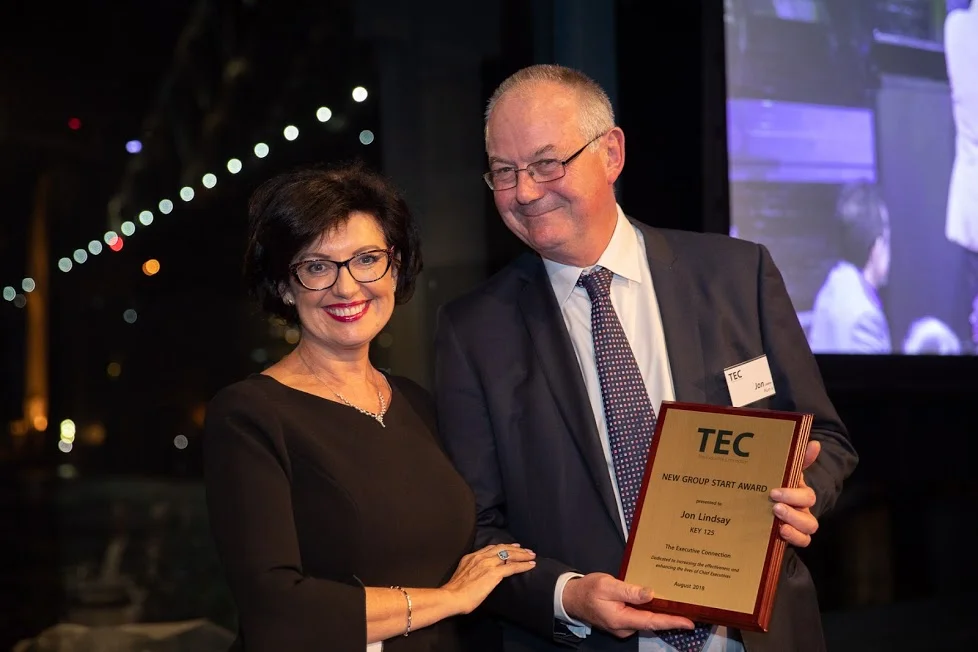





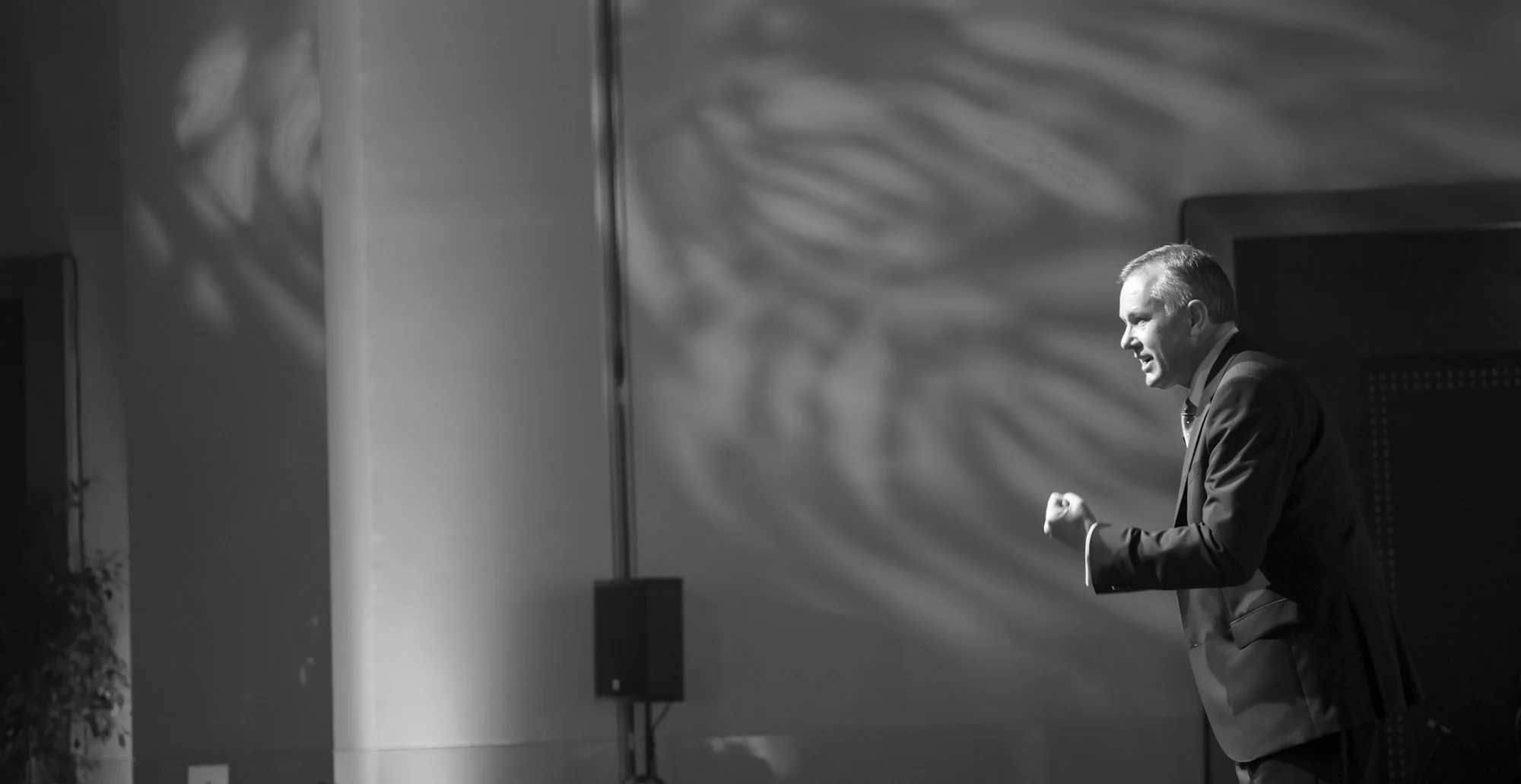
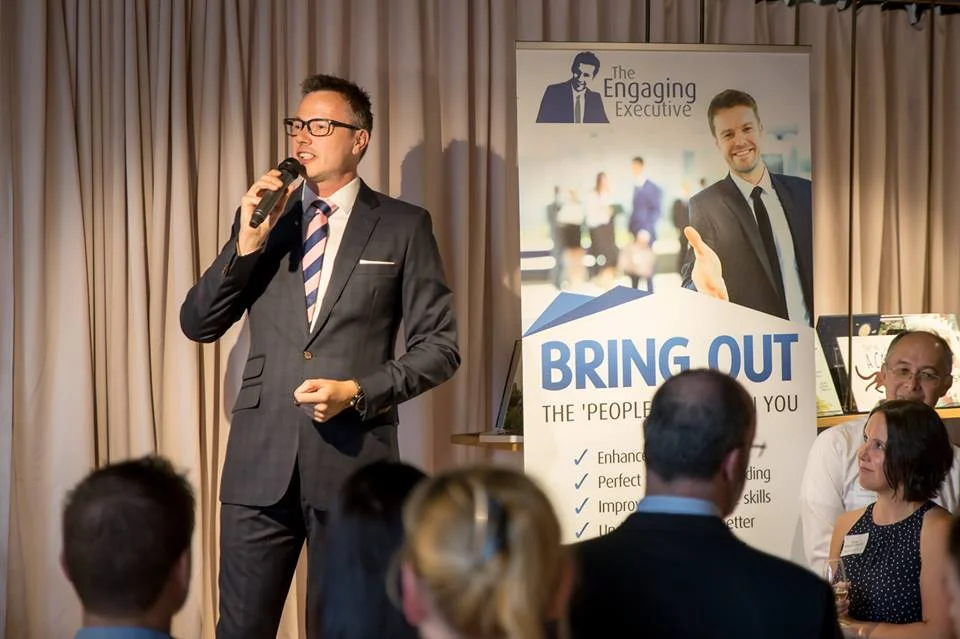
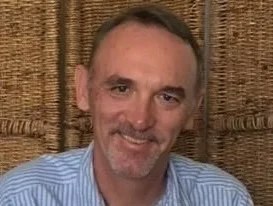



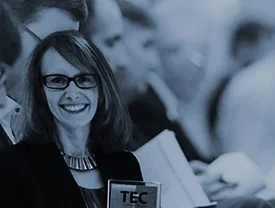

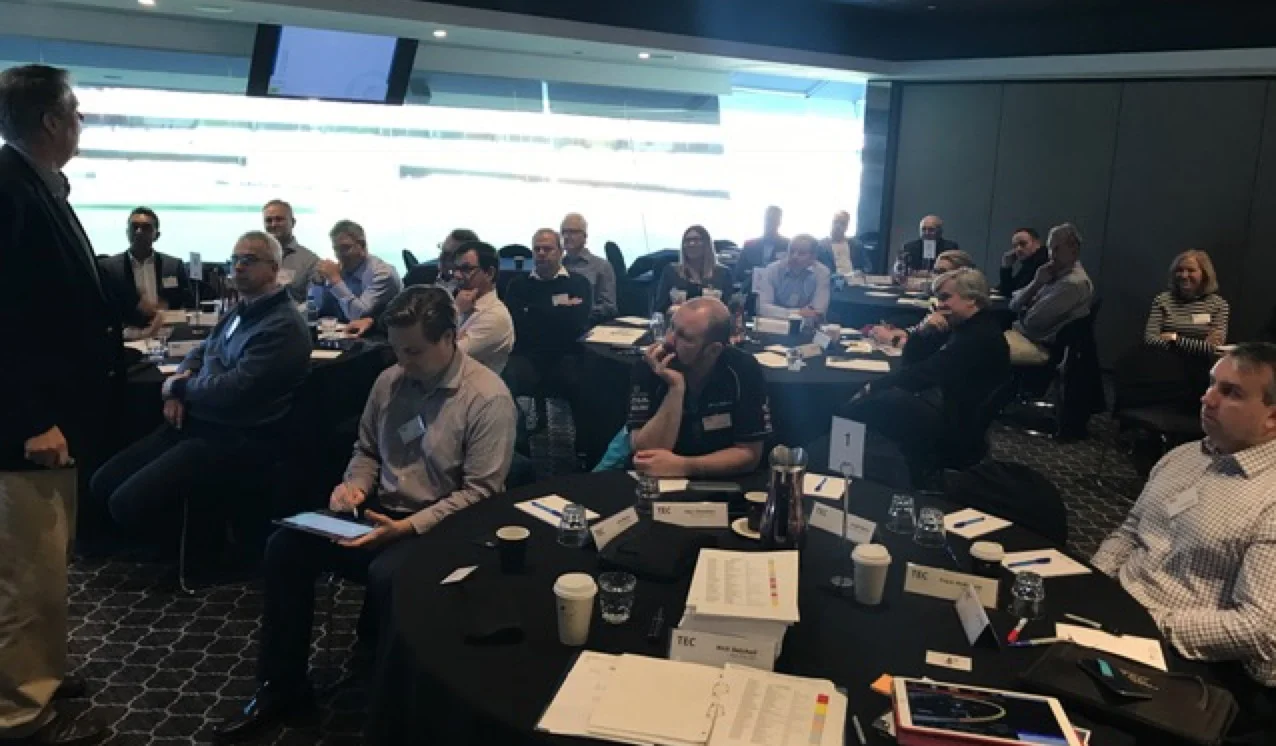








Chris has recently co-authored a highly successful book about how simple habits can embed a culture of continuous improvement. In this new workshop series for TEC members he explains how to embed these simple habits into everyday business.